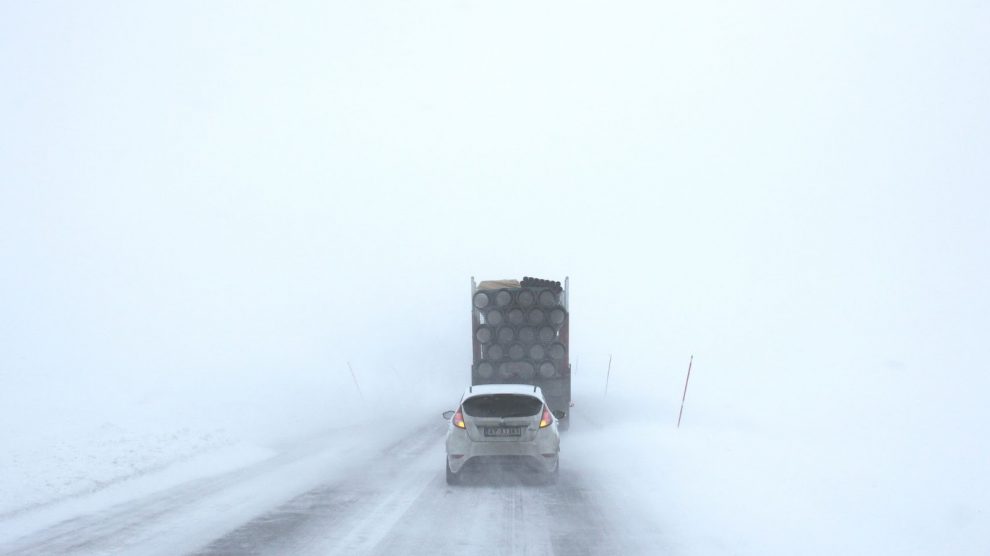Driving in extreme conditions can be a challenge, but it doesn’t have to be an impossible task. With the right knowledge and preparation, you can stay safe and secure on the roads even during inclement weather or other hazardous situations.
Photo by Rémi Jacquaint on Unsplash
Driving in these situations requires extra caution to keep yourself and other drivers safe on the road. It is important to understand how to handle your vehicle during these weather extremes so that you can stay safe while driving.
Things To Keep In Mind During Extreme Weather
Whether you’re dealing with icy roads, blizzards, heavy rain, high winds or any other type of difficult circumstances, there are certain steps you need to take in order to ensure your safety while driving.
Driving safely is essential so that you can stay safe no matter what Mother Nature throws at you.
Understand The Risks Of Driving In Extreme Conditions
Driving in extreme conditions can be dangerous, and it is important to pay attention to the weather and road conditions.
Be aware of things like ice, snow, fog, heavy rain and high winds that can affect your driving safety. Make sure you have the proper tires for the conditions you are driving in, as well as plenty of fuel and an emergency kit.
Prepare Your Car For The Elements
Take the necessary precautions when driving in extreme conditions. Inspect your vehicle’s exterior and undercarriage for road debris, cracks, holes, or other damage that may prevent proper operation and handling.
Check your tires for proper inflation pressure, tread wear and make sure that your spare tire is properly inflated.
Make sure to have a winter safety kit with a blanket, extra set of clothes, first aid kit, snacks, water, and any other items that may be necessary in the event of an emergency.
Pay Attention To Weather Forecasts Before You Hit The Road
If the weather is severe, consider postponing your trip until the weather clears up or taking an alternate route.
When driving during a storm, make sure to turn on your headlights and watch out for snow plows that may be working on the roads. Be aware of black ice and other slippery patches created by the storm and be sure to give yourself plenty of time to slow down.
If you must drive in icy conditions, make sure your tires have ample tread and are properly inflated.
In hot climates, take frequent breaks during long trips and keep an eye on the temperature gauge for any signs of trouble.
Make sure to watch for animals that may be crossing the road and drive slower than usual. If you start to feel drowsy from the heat, pull over and take a break.
Know How To Adjust Your Speed And Handling Accordingly
Rain, snow, ice and strong winds can all make driving hazardous. Drive slowly and cautiously when the roads are slick or visibility is low. If a road is icy, use tires with special treads for better traction on slippery surfaces.
It’s important to stay alert when driving in extreme conditions. Be aware of any changes in road conditions, such as speed limit reductions or construction zones. Be sure to keep your headlights and tail lights on for maximum visibility.
Familiarize Yourself With Winter Driving Techniques
Before winter arrives, practice driving on icy or snow-covered roads in a safe area. Learn how to make proper turns, when to apply brakes and how much pressure should be applied.
Knowing what to do in the event of skidding can help minimize the chances of an accident.
Take Extra Caution When Passing Vehicles On Icy Roads
When driving in icy conditions, it is always important to keep a safe following distance between you and other vehicles. Be alert and aware of any obstacles that may be on the road or unseen due to the poor visibility caused by fog or snow.
Be Mindful That Driving Conditions Can Change Rapidly
Driving in extreme conditions can be dangerous and even life-threatening, so it’s important to be aware of the potential hazards.
When driving in wintry conditions, remember that snow and ice can make roads slippery and can lead to hazardous driving conditions. Give yourself extra time for your journey as you may need to slow down to maintain control of your vehicle in icy conditions.
Be sure to remain alert, pay extra attention to the road and other vehicles on the road, and adjust your speed accordingly.
Stock Up On Windshield Wiper Fluid And Make Sure All Your Lights Are In Working Order
You’ll be thankful if your visibility is impaired during a storm. Keep an ice scraper and snow brush handy in case of icy conditions. If you live in areas prone to heavy snowfall, it may be beneficial to invest in snow tires or chains for added traction and stability.
Emergency Numbers
In the event of an emergency while driving, it is important to know who to call for help. Depending on your location, different numbers may be available. Make sure you know what these numbers are ahead of time so you can quickly get in touch with the proper authorities if needed.
Drive With Both Hands On The Wheel
This will help give you better control of the car and make sure you can react quickly to any unexpected changes in the road conditions.
Listen To The Radio
Tune into a reliable radio station with low-volume road condition updates during your journey. This will allow you to stay informed of potential route changes or closures without intruding on the concentration you need when driving in hazardous conditions.
Keep it at a low volume and pay close attention, ensuring that you know all there is to know about the roads ahead!
Conclusion
Driving in extreme conditions can be a challenging experience. It’s important to remember that safety should always come first, so make sure you are extra cautious and take the necessary precautions when driving in these kinds of situations.
Always check your vehicle before heading out on any journey, as well as ensuring that you have supplies like food or water just in case something goes wrong.
By following these tips for safe driving during inclement weather or other hazardous road conditions, you’ll be able to stay safe while still getting where you need to go. So don’t forget: drive safely and plan ahead!





















